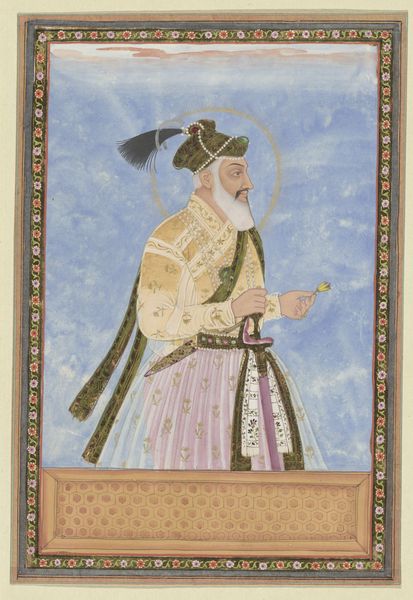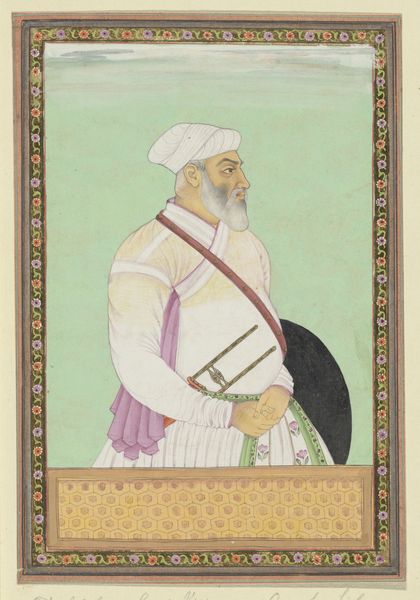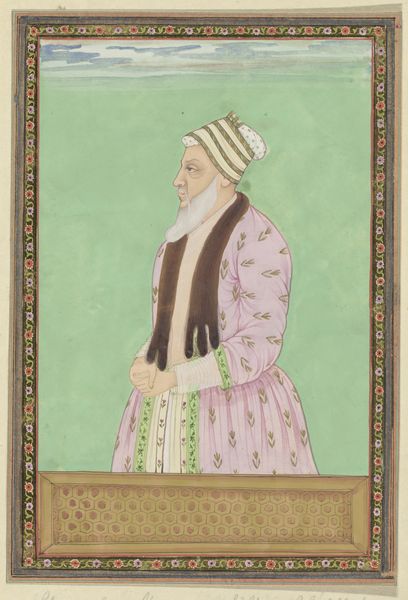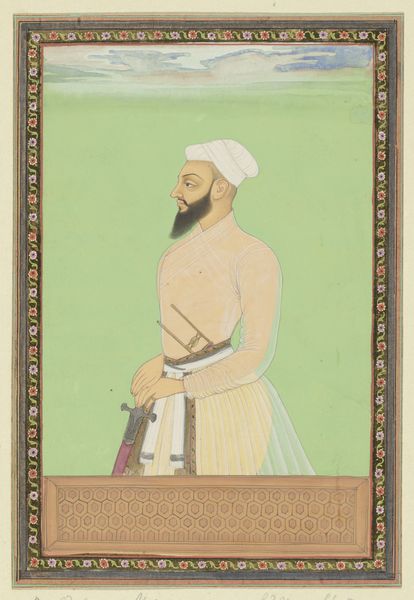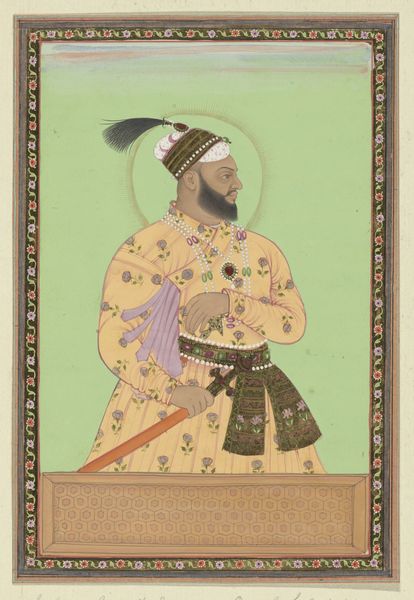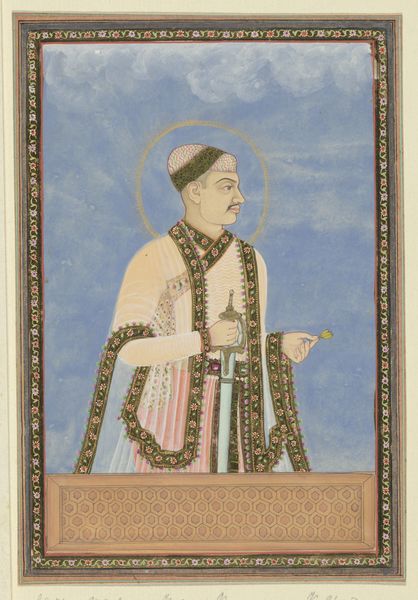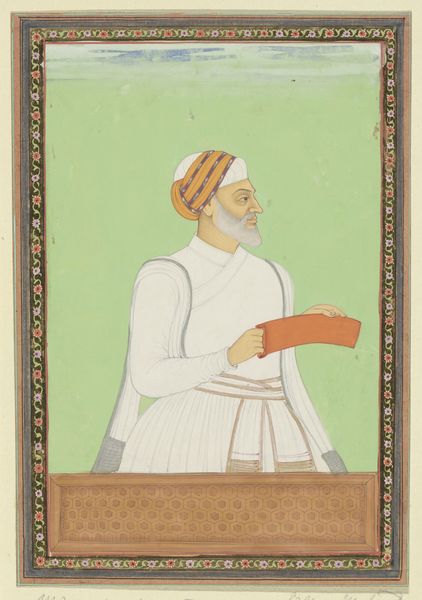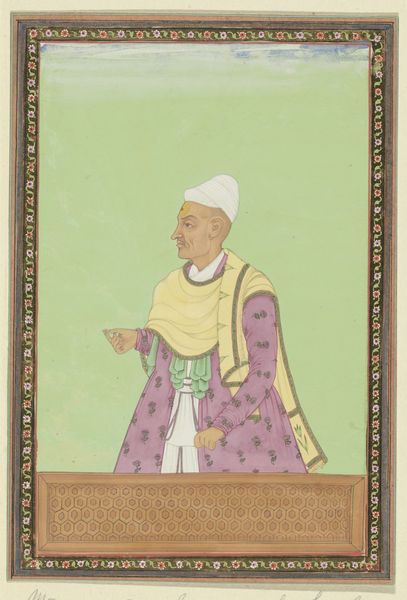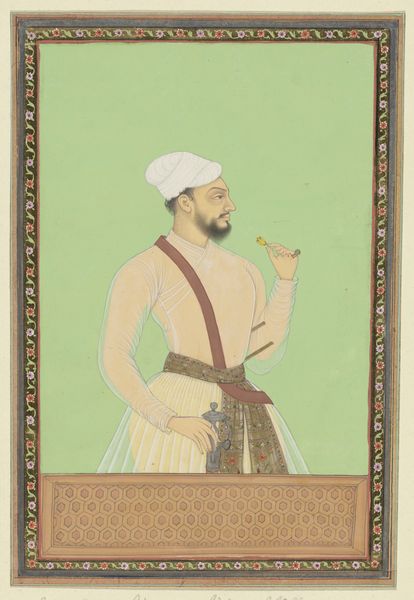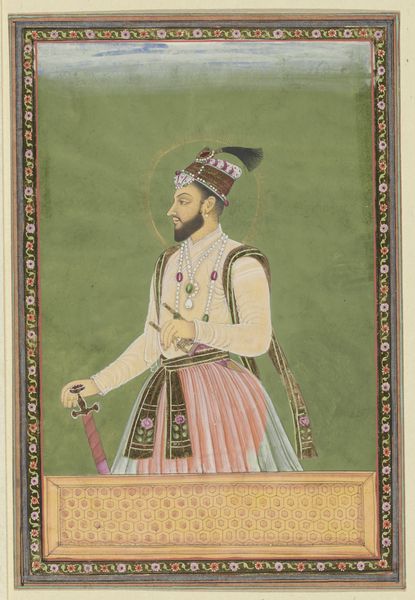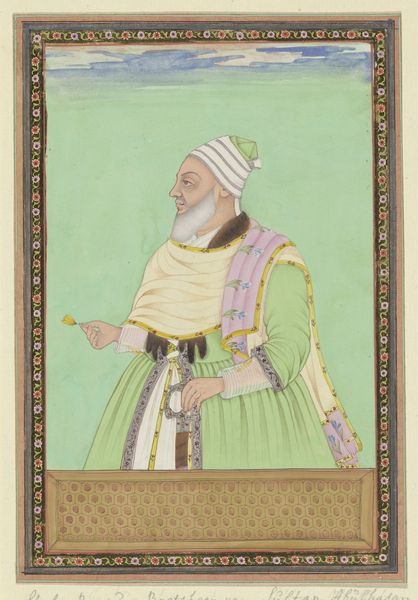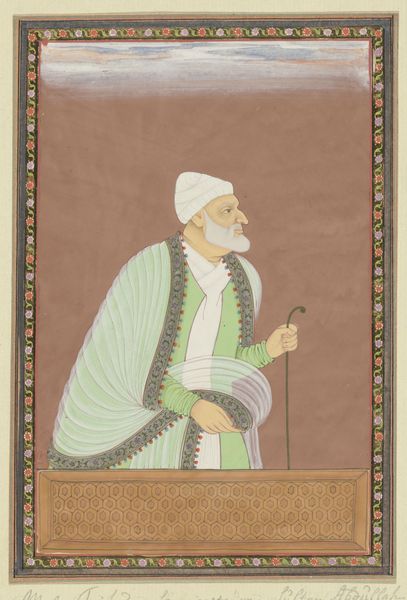
Portrait of Nawah General Firoz Khan c. early 18th century
0:00
0:00
painting, watercolor
#
portrait
#
water colours
#
painting
#
asian-art
#
figuration
#
watercolor
#
miniature
#
watercolor
#
realism
#
calligraphy
Dimensions: 7 7/8 x 6 3/8 in. (20 x 16.19 cm)
Copyright: Public Domain
This is a Mughal-era portrait of Nawab General Firoz Khan, made with opaque watercolor on paper. Notice the general's turban and robe, adorned with delicate floral patterns—symbols of prosperity and the transient beauty of life. The rose motif, prevalent in both his attire and the frame, resonates across cultures; from ancient Rome, where it symbolized love and secrecy, to its later association with the Virgin Mary in Christian iconography. Consider how, in the Renaissance, Botticelli echoed this association by scattering roses around the figure of Venus, the goddess of love. These recurring visual themes create a path through time, linking diverse cultural expressions. This image taps into our collective memory, engaging emotions and subconscious associations, a powerful testament to the enduring resonance of symbols. Like the ever-blooming rose, motifs resurface, evolve, and take on new meanings across time, a cyclical progression that binds our visual history.
Comments
minneapolisinstituteofart almost 2 years ago
⋮
This finely executed portrait of General Firoz Khan, a seventeenth century nobleman and member of the Golkonda court in the Deccan, demonstrates that Persian-inspired painting flourished at Golkonda before the Mughal ruler Aurangzeb finally conquered it in 1687. The rulers of the Deccan plateau were Muslim, like the Mughals, but whereas the Mughals were Sunnis and influenced by eastern Iranian and Central Asian painting, the sultans of the Deccan were Shi'as and more influenced by Safavid and Arab culture. The preference for fine detail, polished surface, and decorative floral borders evident here demonstrates considerable Persian influence. Following the military campaigns of Aurangzeb, Mughal artists found their way to central Indian courts and perpetuated Muslim-inspired painting through the eighteenth century.
Join the conversation
Join millions of artists and users on Artera today and experience the ultimate creative platform.

